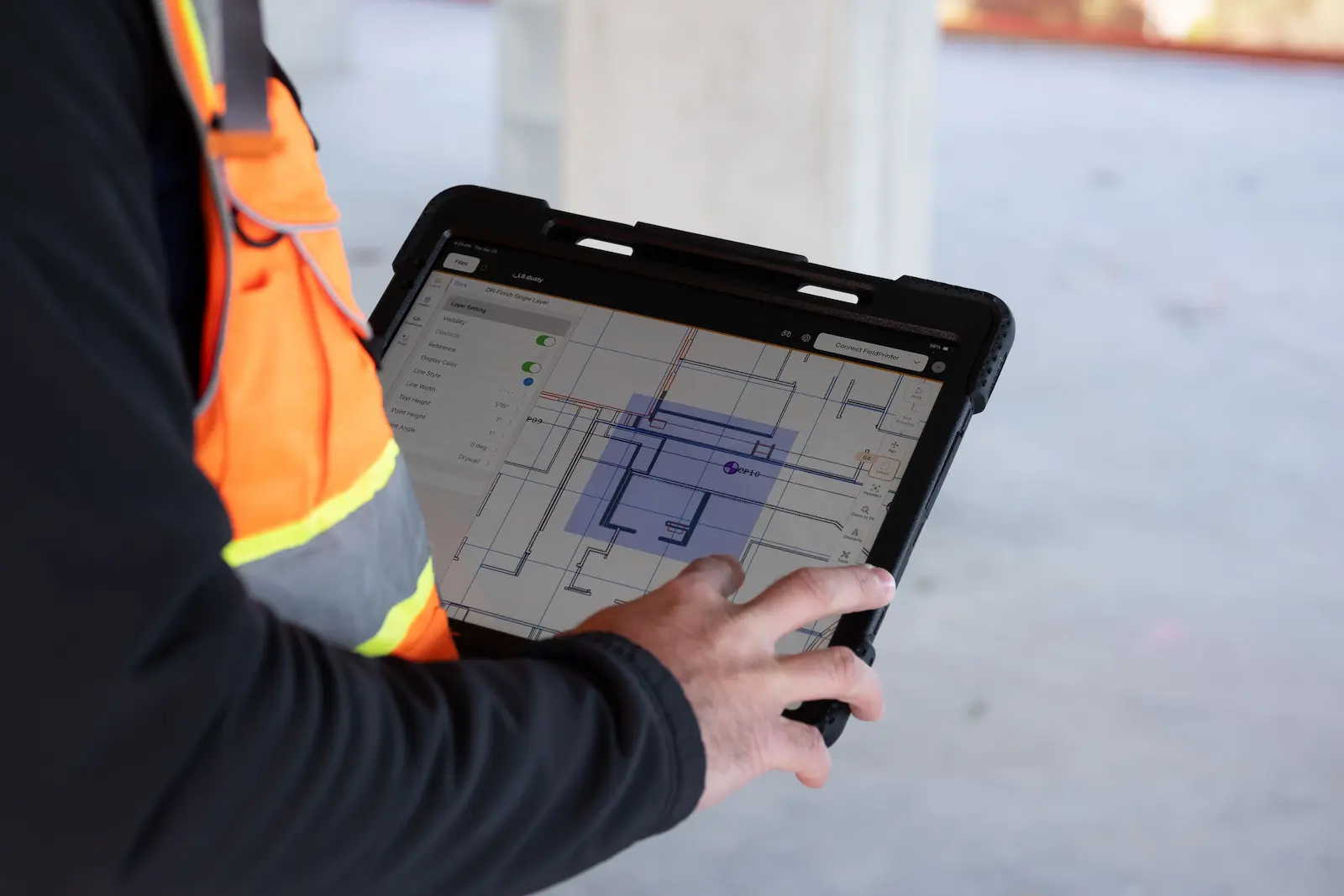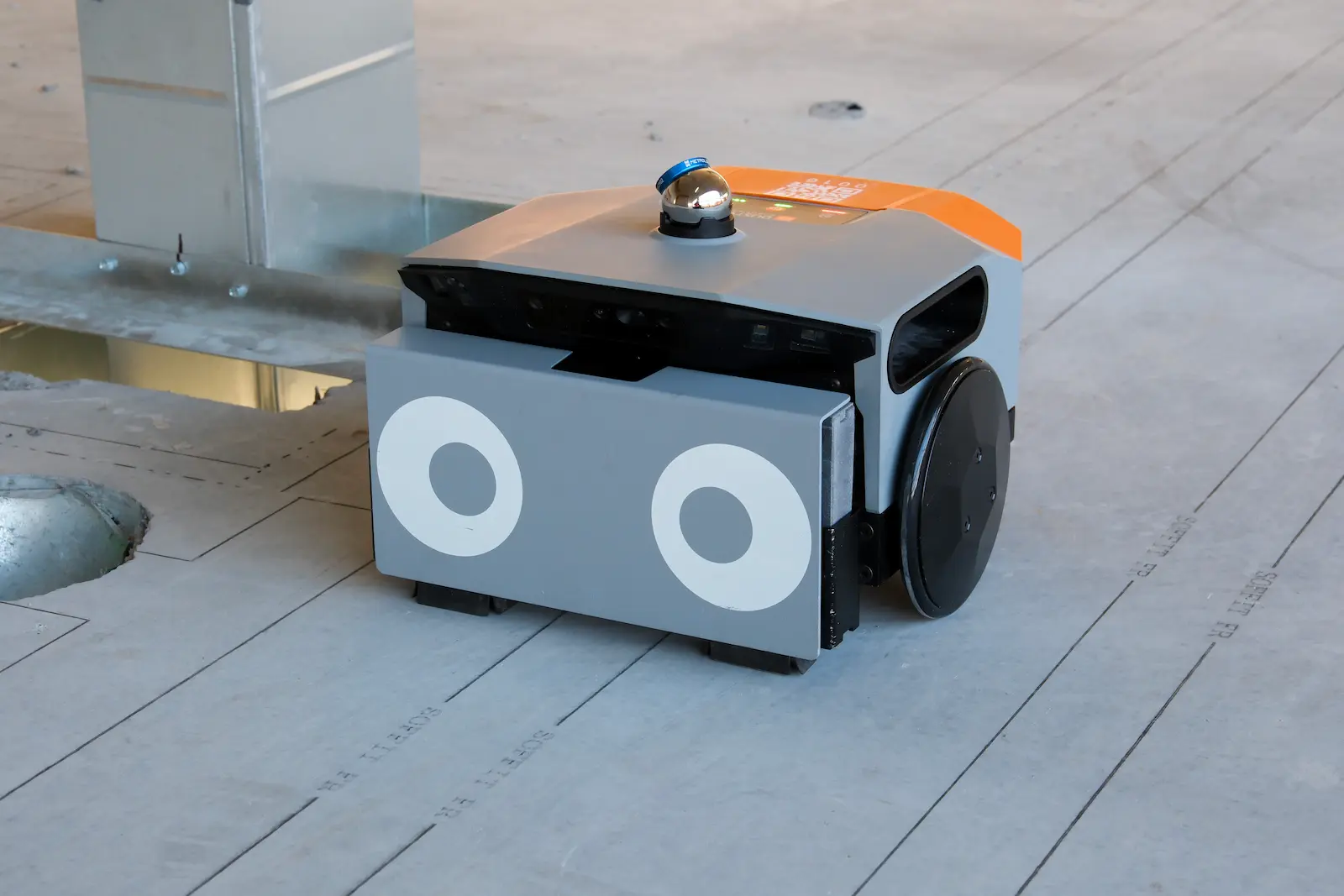Automate layout for an end-to-end solution

Fully automated robotic layout

Trust
Clarity
Efficiency
Why mechanical contractors
choose Dusty
Build trust
in your layout
with 1/16” accuracy
Drive efficient
timelines
to over 250 points/hr
Ensure clarity
during installation
rework by up to 75%
How to use the Dusty FieldPrinter

01. CAD or CSV files
02. Control points
03. Clear floor
Frequently asked questions
A total station is an electronic instrument that is used in construction for measuring distances and angles for surveying and construction layout. There are two types of total stations in construction: a total station and a robotic total station. However, total stations are considered outdated tools for construction layout. Fully-automated robotic layout is the better solution that completely automates the layout process by printing the digital model directly on the construction site surface.
The total station requires manual setup to measure the angles and distances of layout points and manual markings of the layout measurements on the job site surface. This helps remove the need for chalk-line layout methods, while it still requires multiple workers and manual labor.
The robotic total station can be controlled remotely to calculate and inspect measurements and angles of layout points. However, using a robotic total station still requires the manual markings of the measurements on the job site surface.
On the other hand, fully-automated robotic layout prints the coordinated model directly on the job site surface, requiring no manual labor. The entire layout process is automated, improving speed, accuracy, and safety.
While using a total station is better than a purely manual layout process, total stations still require manual labor to calculate distances and mark the layout measurements on the job site surface. Manual layout introduces risk in a construction project, including:
▶ Layout errors
▶ Faulty installation
▶ Construction schedule delays
▶ Rework
▶ Worker injuries
Dusty Robotics FieldPrinter is better for layout than total stations. The FieldPrinter automates the entire layout process, printing the coordinated digital model directly on the job site surface.
Dusty Robotics automated layout is a brand new way of doing layout. The Dusty FieldPrinter prints the coordinated digital model across all trades directly on the construction site surface. With fully automated layout thanks to the Dusty FieldPrinter, there is no need for manual labor via measurements or markings. Layout is fast, accurate, and reliable for installation. And, automating physically demanding tasks helps improve workplace safety.
Robotic total station layout only automates part of the layout process, leaving workers to manually mark the measurements provided by the total station. This introduces risk to the project and can result in faulty installation or workplace injuries.
Want to learn more?



